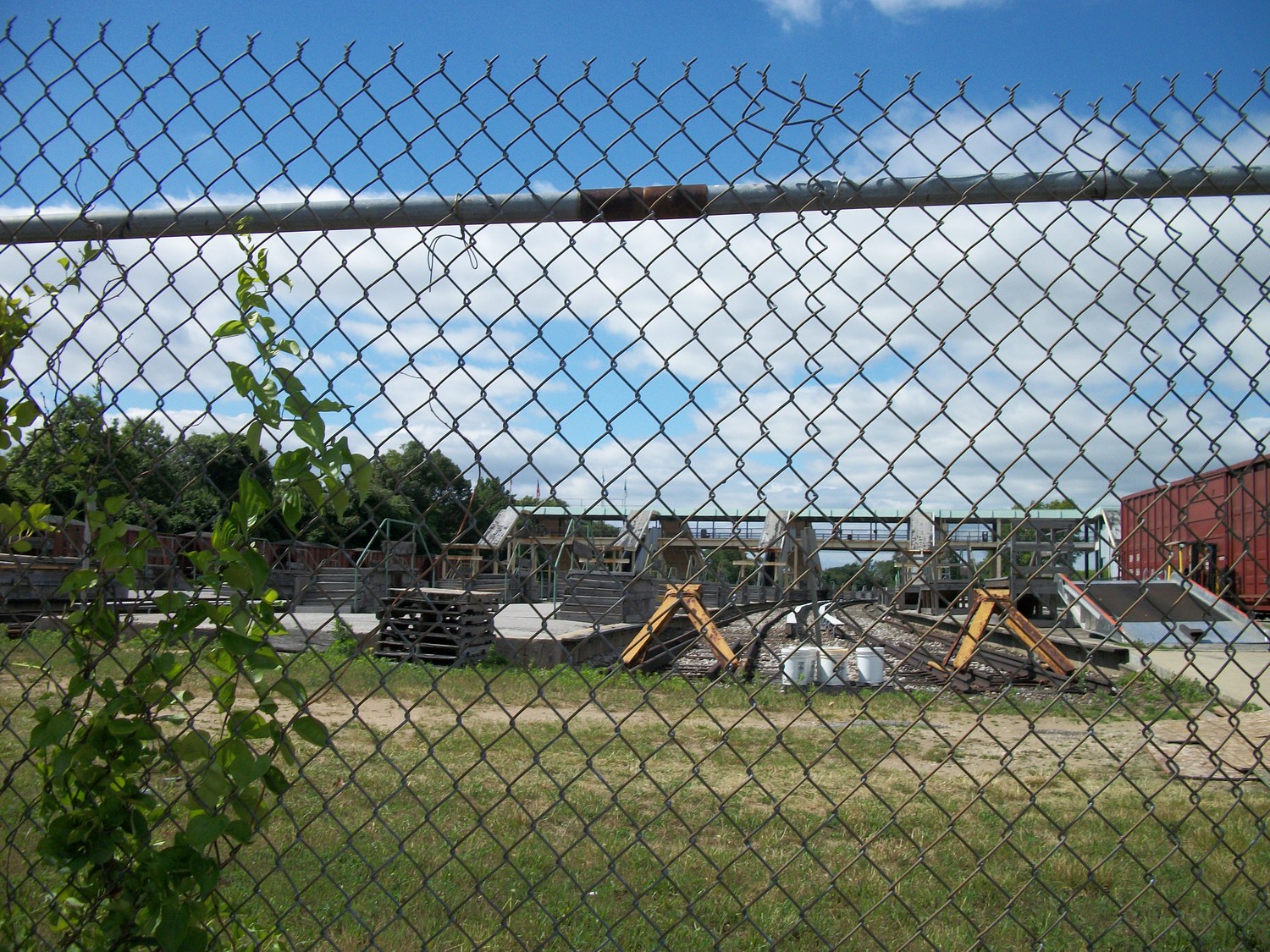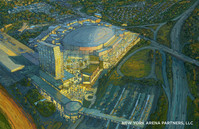Belmont station link in question
Financing, construction still on drawing board
First of two parts.
The Belmont Park Long Island Rail Road station has certainly seen better days. Wind-blown platforms and rusting tracks mask the station’s history, when it carried tens of thousands of fans, socialites, sports figures and the idly curious to Belmont Park to try their luck with the ponies. Regular LIRR service ceased “for economic reasons” in 2010, and the station was shuttered. Since then, it has been mostly derelict, except for a quick sprucing up once a year for the special trains that serve the Belmont Stakes leg of the Triple Crown.
Now, however, the station that once welcomed nearly half of all racetrack attendees looks as if it might get a complete makeover. The Arena Development Group, the consortium headed by the New York Islanders, is returning to Nassau County. Reopening the Belmont Park station is critical to the consortium’s plans for the stadium complex that it has won the right to build on 43 acres of the park, according to Senior Vice President Richard Browne of Sterling Development Group, one of Arena’s three principal partners.
Along with those plans, however, comes a host of questions about what upgrades will be needed and at what cost; who will pay for what and when; and how long it will take before the Elmont community and Long Island as a whole can begin to reap the rewards promised by the team and its partners.
One of the first questions local opponents of the project ask is how hockey fans would get to the new stadium, State Assemblywoman Michaelle Solages (D-Elmont) noted in a recent interview. Visitors to the racetrack now arrive mostly via city streets accessed from two major parkways, or by bus. Without significant upgrades or expansions, none of those streets, which mainly run through suburban neighborhoods, are equipped to handle an influx of up to 18,000 visitors for the 150 annual events envisioned by stadium planners. Moreover, both the Cross Island and Southern State parkways, which bring people from outside the neighborhood, already carry heavy traffic throughout much of the day, including the peak periods when most stadium events take place.
Part of the difficulty is that reconstruction of the Belmont station depends, in part, on the outcome of other projects. “Those trains have to come from somewhere,” Penner said. “Penn Station doesn’t have the platform space or the tracks” to handle any significant increase in riders, to say nothing of the cost. “Just to give an idea: The smallest part of the equation is the need for additional cars,” at nearly $3 million each, he said. To meet the need of all the projects in the pipeline, “you’d need at least 200 of them.”
In the works, Penner added, are upgrades to the Ronkonkoma and Hicksville lines that “will cost more than $2.5 billion and won’t be finished until 2022, at the earliest. Altogether, “[Governor] Cuomo has promised infrastructure improvements that would cost at least $100 billion, if he built them all.”
Should the Belmont station not be ready in time, local bus companies, both public and private, would likely pick up the slack, Penner said. This, too, would require additional equipment, personnel and garage space, to say nothing of the added congestion that would be created. Penner referred to all this as a form of indirect taxation — “sports pork” was his colorful term — since “the taxpayer pays for the bus lines and railroads.”
Many of these improvements would have been needed even without a new stadium, and the LIRR is addressing some concerns already. It has scheduled $3 billion in improvements and upgrades throughout the entire system, according to its “2015-2019 Capital Improvement Plan.” This includes service upgrades to Penn Station; the purchase of 88 new M-9 cars at a cost of $240 million, with an option for 22 more; and additional capacity, tracks and storage facilities throughout the system in anticipation of direct East Side service to Grand Central Station, scheduled to begin in 2023, at a cost of nearly $10.2 billion.
Gov. Andrew Cuomo has said he wants the Islanders stadium ready for the opening game of the team’s 2020 season. This is good news for the Islanders, whose current agreement with Brooklyn’s Barclay’s Center will run out by mutual consent in 2019, although the original agreement does provide for the possibility of a longer relationship.

 47.0°,
Mostly Cloudy
47.0°,
Mostly Cloudy 








